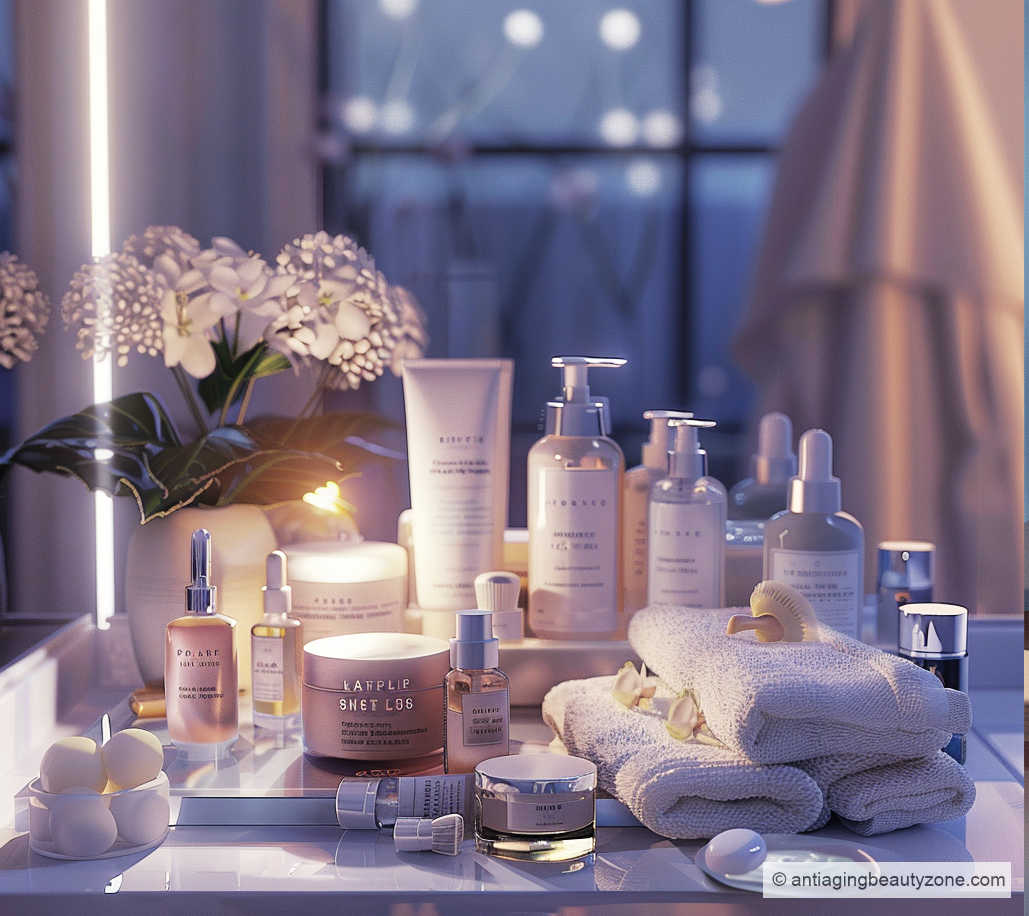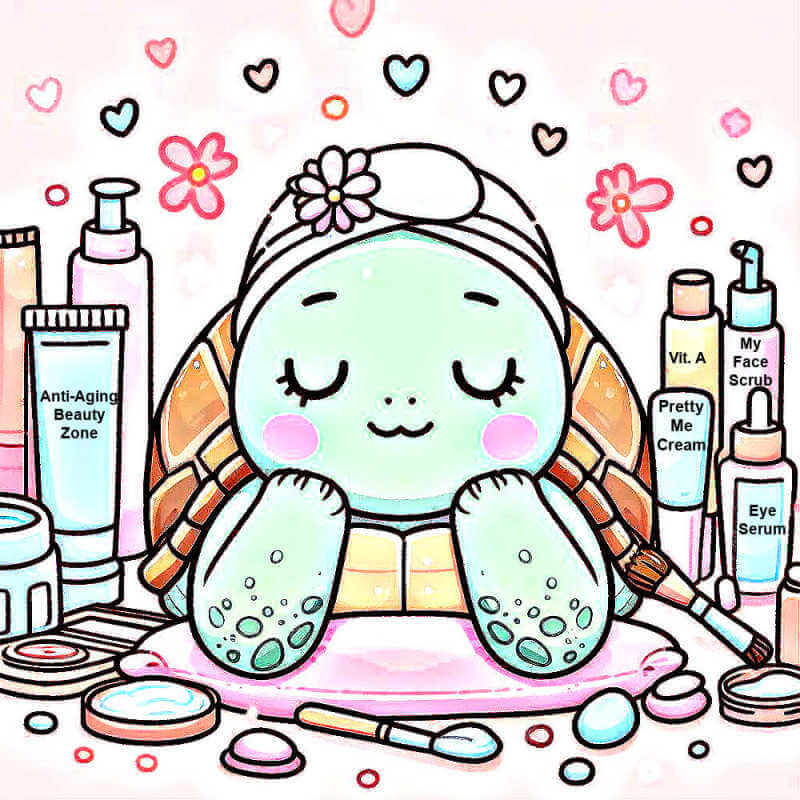As an Amazon Associate, I earn from qualifying purchases and other affiliate links. I only recommend products I’ve tried or researched.
- Home
- Skincare Guide
- Brighten
What is Skin Brightening: How to Get Bright Glowing Skin
by: Linda Robison / Facial Fitness Specialist
What does "skin brightening" really mean?
You may not know the textbook definition—but you do know when your skin looks dull, tired, or uneven.
This guide breaks down exactly what skin brightening is, and how to bring back your natural glow—with real-world tips that go beyond just another serum.
From sunscreen and anti-aging treatments to what you eat, we’ll cover simple ways to refresh your skin from the inside out.

Understanding Brightening vs Lightening
In skincare, words like brightening, lightening, and whitening get tossed around a lot—but they’re not the same thing.
Skin brightening is all about enhancing your skin’s natural glow. Think: fresh, healthy, and radiant—not lighter. It works by gently exfoliating, hydrating, and encouraging cell turnover to revive dull or tired-looking skin.
Skin whitening, on the other hand, aims to reduce melanin and lighten your overall skin tone. These products often use stronger ingredients that can be harsh or irritating.
As dermatologist Dr. Mona Gohara, explains:
“Brightening treatments are generally safer and less likely to irritate the skin compared to whitening products, which can be more aggressive and disruptive.”
Key strategies for brighter complexion

It's important to start a healthy skincare habit. If you're 35+, you need to do more than the basic wash, dry and moisturize routine.
Upgrade your skincare routine
Alpha-hydroxy acids (AHAs) like glycolic and lactic acid are essential. These powerful exfoliants reveal smoother, brighter skin by removing dead skin cells and promoting cell turnover.
Pair your AHAs with Vitamin C serums to reduce dark spots and protect against aging. Adding niacinamide boosts hydration, calms inflammation, and evens skin tone.
These are the same types of ingredients I reach for when I’m working on reducing my sun spots too.☺️
Add skin brightening ingredients
For a more radiant complexion alpha-hydroxy acids (AHAs) like are a must!
These powerful exfoliants reveal smoother, brighter skin by removing dead skin cells and promoting cell turnover. And pairing glycolic and lactic acids together brings even better results.
Also consider adding brightening serums like Vitamin C, it not only protects from aging, but also reduces dark spots and enhances overall clarity.
Niacinamide, which can be use with vitamin C, improves skin hydration, reduces inflammation, and evens out skin tone.
Use anti-aging night treatments
Add products with active ingredients like retinols to your nighttime routine.
They boost cell turnover and prevent dead skin cell buildup, which can make your skin look dull. Using these at night supports your skin’s natural repair while you sleep.
Upgrade your moisturizer
Antioxidant moisturizers do more than hydrate—they protect your skin from damage. Packed with antioxidants, they neutralize harmful free radicals, helping to reduce fine lines and wrinkles. This gives your skin a youthful, radiant glow and shields it from aging.
Use sunscreen
Never underestimate the power of sunscreen. It's your primary defense against dull skin and premature aging. Sunscreen not only protects against dark spots but also helps prevent UV damage that can diminish skin's vibrancy.
Look for a broad-spectrum SPF 30 or one with a high PA rating (see why this is important for aging skin).
If you’re already seeing brown spots or sunspots, I break down simple ways to fade them in my sunspots guide.
Embrace exfoliation
Getting rid of dead skin cells is key to making your skin glow! There are lots of ways to do this, depending on your skin type.
You might try gentle home chemical peels to reduce hyperpigmentaion, homemade sugar scrubs for a natural touch, exotic Korean face scrubs , or manual exfoliation tools for deep exfoliation.
Experiment to fnd the method that works best for you.
Note: Personally, I rotate through a mix of the exfoliation methods listed above. But be careful not to overdo it. Too much exfoliation can irritate your skin and make it look dull and aged. Pay attention to how your skin reacts and adjust to avoid problems.
Try masks
Masks (especially the benefits of enzyme masks) are gentle way to reduce dullness without scrubbing your face. They use natural enzymes to gently break down dead cells, providing a more radiant and smooth appearance. These options are ideal for sensitive skin types and offer a non-abrasive alternative to traditional exfoliants.
And you can probably make many of these enzyme masks with ingredients found in your refrigerator right now. And, if you're looking for an extra radiant boost, try a DIY crushed pearl powder face mask for an instant brightening and illuminating effect!
Cut the carbs
The food you consume plays a crucial role in skin health. A balanced diet that contains skin nourshing foods is rich in antioxidants and healthy fats supports a bright complexion.
Cut back on sugar and refined carbs—they speed up skin aging.
When you eat too much sugar, it can attach to proteins in your skin and form something called AGEs (advanced glycation end products). These damage collagen and make skin look older over time.
AGEs can cause dullness, uneven texture, and accelerate aging. By limiting or replacing sugary and high-carb foods with skin-loving veggies, you help prevent glycation and promote a healthier, more luminous complexion.
Self-tanners: For a beautiful glow
Self-tanners provide an instant boost to your skin’s vibrancy. When used with brightening products like AHAs, Vitamin C, and retinols, they enhance your complexion without UV exposure.
Check out our guide on Facial Self-Tanner for Mature Skin to learn how to integrate facial tanners with your favorite brightening treatments for a radiant, sun-kissed glow.
Additional tips for glowing skin
Get Quality Sleep: Adequate sleep is vital for skin health. Aim for 7-9 hours of restful sleep each night to support skin repair and regeneration.
Stay Hydrated: Proper hydration is key to maintaining skin’s natural glow. Drink plenty of water throughout the day and use a high-quality moisturizer to lock in hydration.
Consider Professional Treatments: For deeper exfoliation and skin brightening, professional treatments such as chemical peels, microdermabrasion, or laser resurfacing can be beneficial. Consult with a dermatologist to explore the best options for your skin type.
👉 Need a step-by-step action plan? Try these 12 easy ways to fix dull, sagging skin naturally—simple tweaks that make a visible difference.
👉 Still feel like your glow is missing—even if you exfoliate and hydrate? Here’s what finally worked for me, especially after 40. (Hint: it wasn’t another serum.)
About the Author:
Linda Robison is a Facial Fitness Specialist and the founder of Anti-Aging Beauty Zone. With decades of hands-on experience, she shares practical, natural ways to lift and brighten mature skin—without expensive or invasive treatments.
Before you go ....
Please tap on the💙in the bottom right corner if you found this page helpful.
FOLLOW ME FOR MORE TIPS:
SHARE OR SAVE FOR LATER:

